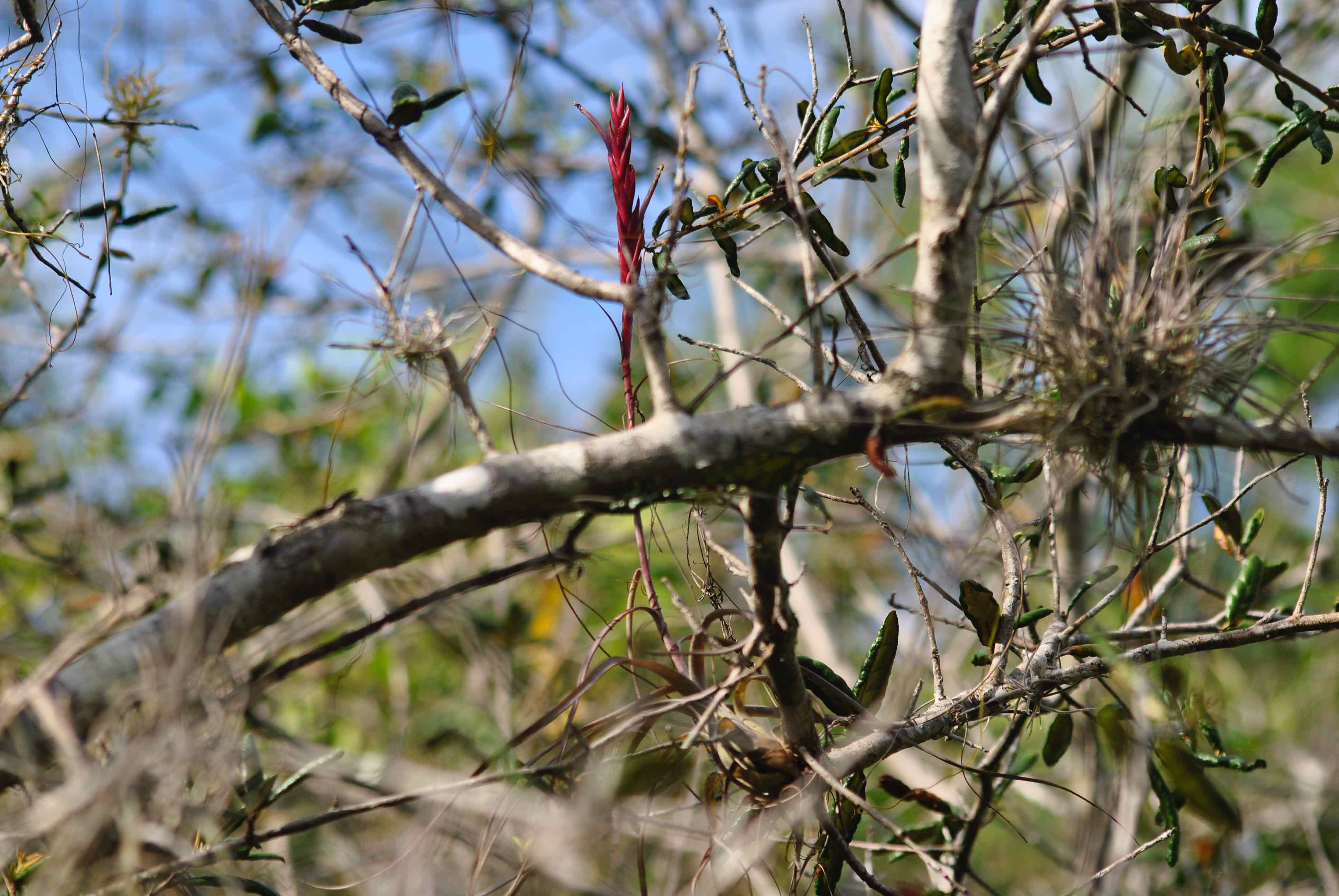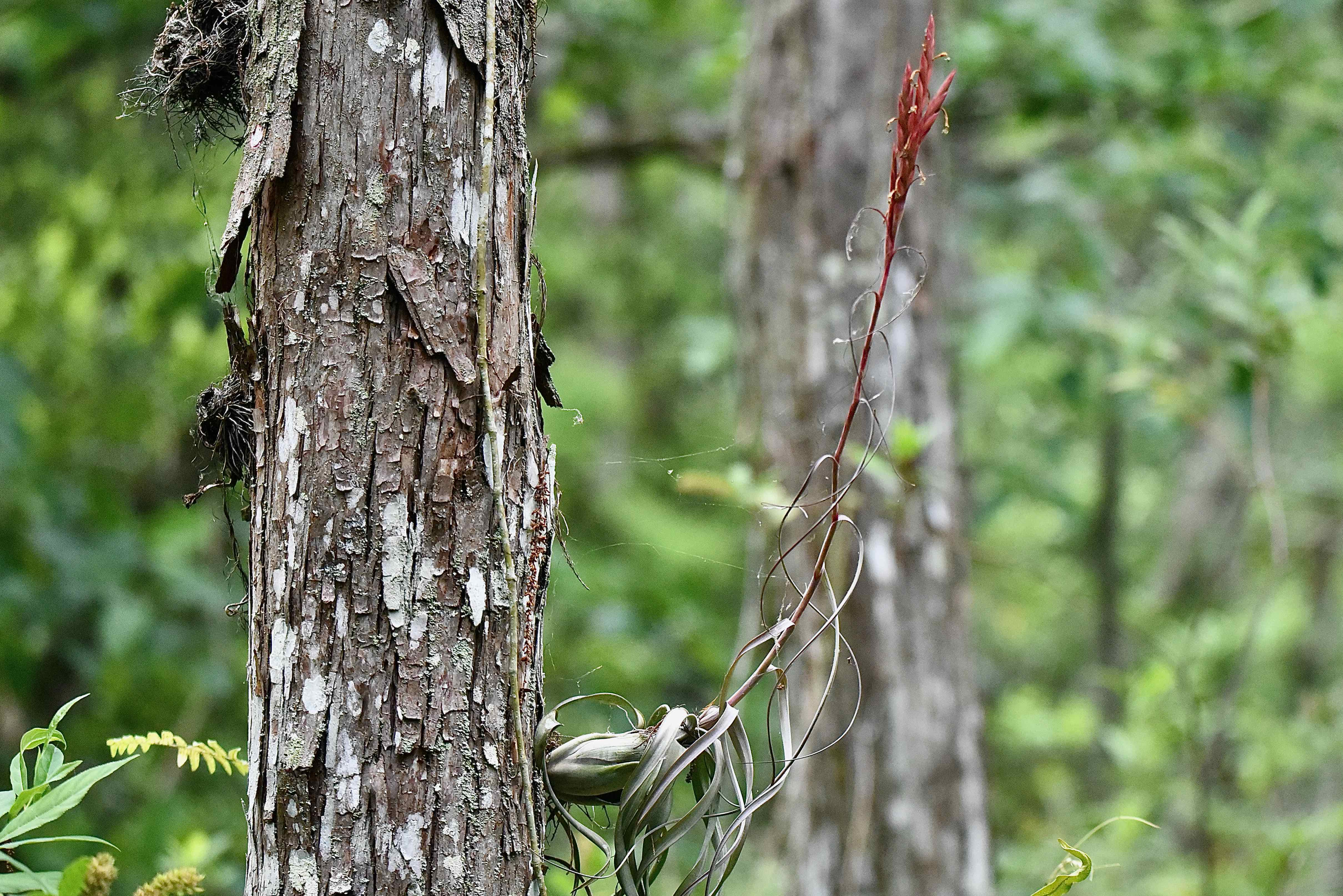
Balbis' Airplant, photographed at Fern Forest Nature Center, Coconut Creek, Broward County, in May 2014.
Imagine a Coke bottle and you pretty much have the basic shape of Balbis’ airplant, Tillandsia Balbisiana. It so resembles that iconic shape that one of its common names is Coke bottle airplant.
It’s wide at the base, becoming wider as you go up the stem, then narrowing farther up. Add some arching gray-green leaves and you have Balbis’ airplant.
However, others look at Balbis’ airplant and see something else: the cuddlefish airplant is another of its many common names. It is somewhat mollusk-like in appearance, at least with a little imagination.
More commonly, it’s commonly known as reflexed wild pine, or northern needleleaf. Take your pick. We’ll stick with Balbis’ airplant for purposes of this item.
Some basics:
Balbis’ airplant is fairly common in the wilds of South Florida, but legally listed as threatened by the state, as are many airplants native to the Sunshine State. The threats are basically the same for all of them: the Mexican bromeliad weevil, development and loss of habitat and to some extent, poaching, or illegal collection.
Its range extends from Central Florida as far north as Orange County, southward through the Peninsula and into the Keys. Balbis’ airplant is also found in the Caribbean, Mexico, Central America and South America.
Balbis’ airplant takes to mostly wet environments. Favored habitats include pinelands, edges of marshes, strand swamps, hammocks, shell mounds and mangrove forests. It is an epiphyte, meaning it needs a host tree to provide a place to live but it is not a parasite. It takes nothing from the host.
Specifically, Balbis’ airplant is a tank epiphyte, meaning its rosette-like structure allows it to collect water and nutrients, what it needs to survive. Balbis’ airplant isn’t picky when it comes to hosts, but we’ve seen it commonly on cypress trees. It can grow singly, as seen in most photos on this page, or in clusters, as seen in the photo on the bottom right.
More basics:
We’d classify Balbis’ as medium-sized as airplants go. The base of the plant ranges between six and 12 inches tall, reaching as tall as 28 inches when in bloom. It has between 15 and 30 gray-green leaves that arch outward. The leaves are leathery to the touch and covered with scales that give it the gray-green look. The leaves arch outward, then down and taper to a point.
Balbis’ airplant sends out a single flower spike called an inflorescence that is between three and 12 inches tall. The flowers are small, violet in color. The visual interest comes from bright red bracts. Balbis’ airplant blooms early spring into fall.
It is cultivated and available through commercial sources.
The Balbis in the name honors Giovanni Battista Balbis, an Italian botantist of the 18th and 19th centuries.
One last common name: inflated wild pine. Balbis’ airplant is a member of Bromeliaceae, the pineapple family.
Fern Forest Nature Center



